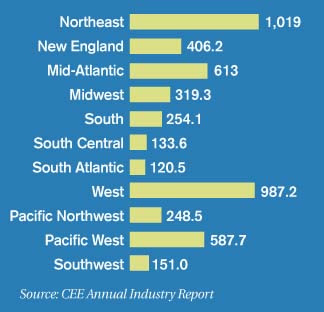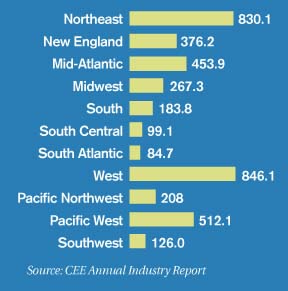How Utilities, Customers Can Both Continue To Benefit From Incentive Programs
There's no question that utilities and commercial customers both stand to benefit from energy saving initiatives, and that will continue as more stress continues to be put on the aging grid. While utilities and customers have come a long way, there's room to improve, says Wood.
There are still opportunities to expand the utilities' traditional emphasis on energy management, she says, "but the other piece of it is this business of integrating building energy management systems with your grid operation so that the whole thing becomes more efficient. So, in the end, the buildings are run more efficiently, the grid is run more efficiently. It results in a more robust grid."
Of course, it's impossible to say for sure exactly what form these programs will take on, but it's probably safe to bet that demand response, equipment upgrades, and consumption reduction efforts will still be high on the list. But, says York, if a different idea comes along, the odds are pretty good that utilities will be offering it.
"From the customer's perspective, they don't necessarily care whether it's energy efficiency or demand response," he says. "They want to manage and reduce their energy costs, have systems performing well, and get the most out of their different building systems."
The utility relationship is part of a more complex equation that also includes improved technology driving the purchasing and operating costs of equipment down. In some areas, such as HVAC equipment, the initial cost may not be dropping very much, but the equipment itself is more efficient to operate. In other areas, such as LED lighting, the cost of the equipment itself is falling dramatically.
As an example, Hays applied for a grant in 2011 as part of a project to purchase LED fixtures, which were going to cost $32,000. A year later, the same purchase would've been $22,000.
"The prices are coming down, and projects that didn't have a very good ROI a year ago, in a year or two may become a project that fits into the parameters," Herrin says. "So I think there is a lot of opportunity, and I don't think we're going to get to the point where we're going to run out of projects to do."
Utilities Spending More On Incentives
The amount budgeted in millions, by region, for 2012 Commercial and Industrial electric DSM programs by respondents to the CEE Annual Industry Report.

The amount budgeted in millions, by region, for 2012 Commercial and Industrial electric DSM programs by respondents to the CEE Annual Industry Report.

|
Related Topics:















